The 706 telephone
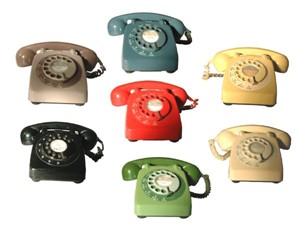
The first entirely new telephone of the 50s was the 700 series. In the sixties the GPO referred to this type of phone as a "Modern Telephone". It was not really available to customers until the early sixties. The original version illustrated right was the 706. The 706 was available in seven different colours - black, red, two-tone green, topaz yellow, concord blue, ivory and two-tone grey/brown.
In 1969 the GPO did a nationwide survey about customers' preferences for new colour schemes for phones. They discovered that the older generation was quite happy with the standard range - preferring blue or ivory. Whilst younger people wanted vivid bright colours such as tangerine and metallic gold. The GPO did little with the results of this survey and no new colours were introduced in the seventies.
They may have decided that the results of the survey were not very helpful. Although blue was chosen in the survey as a favourite colour from the existing range, it was actually the least popular colour chosen by customers. The reason might be the difficulty in changing a telephone once you had one. You had to pay the GPO to remove the old one and reinstall a new one. Most people then chose as neutral a colour as possible to fit in with any decoration scheme - usually ivory.
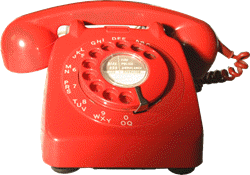
In 1974 a third of the issued telephones were black, a third were ivory and the remainder one of the other colours.
The 706 dial
It is possible to find the 706 with an all figure dial, like the black one above. It was normally known then as the 706F - F referred to the figured dial. The version with the lettered dial was the 706L.
Some very early 706s were fitted with a metal dial, similar to that used on the 200 and 300 series phones. However, these are very rare. These phones also have domed feet instead of flat ones and straight cloth bound cords instead of the PVC curly cord. It is of course very easy to fit a steel dial to a phone that did not originally have one. I am not sure how old the phones would have to be to have steel dials, but ones as early as 1962 certainly had plastic dials.
Printed circuits
There are were two types of these phones issued. There was a design which used a printed circuit (PC) board and a conventionally wired version. The GPO did this, as the phones were made by several different manufacturers and some found the PC boards difficult to work with. So if you remove the case you will see very different looking electronics inside between two phones which look externally very similar.
The version without the PC board is sometimes referred to as the Mk1 and the version with is known as the Mk2. Both versions were made throughout the 60s.
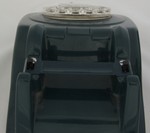
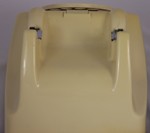
Carry handle?
Some of these phones have bar across the back of the phone underneath the receiver. You can use this to pick it up. Others have just two chrome plates and no bar. Both types are quite common.
The phone on the far left has the carry handle, the one on the near left has the two chrome plates and no carry handle.
Into the 70s
The design was given a mild face lift around 1967 when the dial was replaced by a transparent one and the 'ABC' style lettering was dropped as all figure numbering became more common. This version, known as the 746, continued into the 70s. Since all telephones were rented from the GPO it was common for them to be returned and re-issued. The 706 telephone was often given the transparent dial of the 746 to convert it to a 706F.Waste not want not!
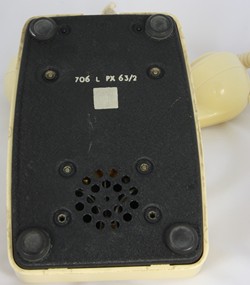
Collecting tips
How old is my 706?
You can find out when the telephone was made from the letters and numbers on the base. There will be something like:
706 L PX 63/2
The model number is '706', 'L' refers to a lettered dial. PX is the manufacturer. 63 is the year of manufacture, 2 is a production batch number.
Two tone phones
The 706 was only supplied in the colours shown above. Some trial versions may have been made in different colours, but these are exceptionally rare. Some of the colour combinations seen on eBay, e.g. red and white, have been made up by combining parts from several phones. This is fine, if you like the colour, but bear in mind it is not original.
Fading colours
One of the biggest problems with these phones is that the colour can fade. Look very carefully at yellow phones to make sure they are not faded ivory ones. The blue phone can also fade badly and look like dark green.
What to pay?
Prices for these phones vary from about £10 to up to £60. Working phones in excellent restored condition sell for the most money. However, it is perfectly possible to get 706 telephones in very good condition for less that £20. If you want to use one and are comfortable with rewiring it, then look for an unrestored example in good cosmetic condition and you will get a bargain. There are also a few rewired phones that go for this price.
Resources
For more detail on the 706 see this excellent page by Bob Freshwater - www.britishtelephones.com/t706.htm
This page has a large collection of pictures of 706 telephones showing many different variants - see www.telephonesuk.co.uk/phones_1960-80.htm


Comments